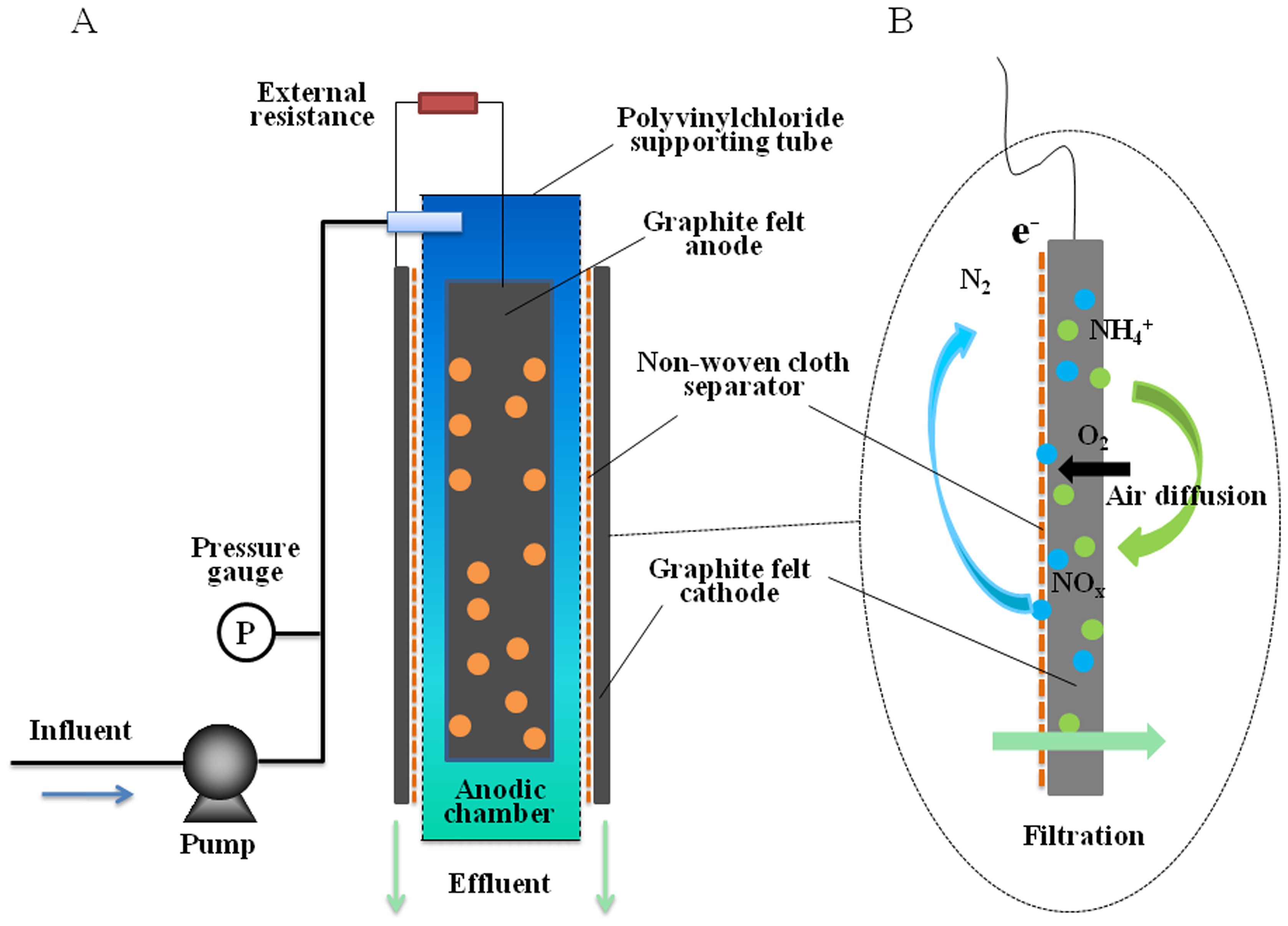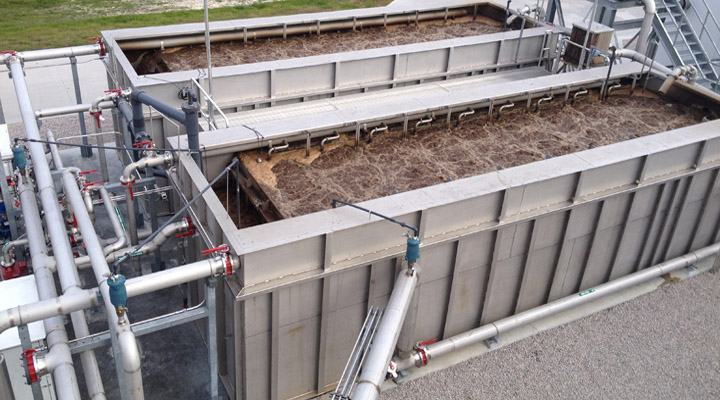Innovations in Membrane Bioreactor Technology for Enhanced Environmental Sustainability
Wiki Article
Exactly How Membrane Bioreactors Are Revolutionizing Water Filtration Solutions
The emergence of membrane bioreactors (MBRs) stands for a substantial advancement in the area of water filtration, combining organic treatment processes with innovative membrane layer filtering technologies. This integration not only improves the quality of dealt with effluent however likewise addresses city room restrictions, making MBRs specifically ideal for densely booming areas. As global water shortage escalates, the role of MBRs in promoting safe and clean water reuse and lasting water administration comes to be progressively critical. The effects of this innovation prolong past performance-- what chances and difficulties exist ahead for its widespread implementation?Summary of Membrane Layer Bioreactors
Membrane bioreactors (MBRs) represent a substantial development in water filtration innovation, as they incorporate organic treatment procedures with membrane layer filtration. This combination boosts the effectiveness of wastewater treatment by using microbes to degrade organic contaminants while at the same time utilizing semi-permeable membrane layers to separate treated water from suspended solids and virus.The MBR system usually contains a biological activator where the microbial population metabolizes pollutants, complied with by a membrane purification system that retains biomass and enables only clean water to travel through. This twin functionality results in higher effluent quality compared to standard treatment approaches. MBRs can be run in both batch and constant circulation modes, providing adaptability in design and application.
They likewise allow the recovery of water for reuse, therefore contributing to water sustainability efforts. Overall, MBRs are at the center of enhancing water treatment effectiveness and high quality, showcasing the potential for innovative remedies in ecological monitoring.
Advantages of MBR Technology
The integration of biological treatment with membrane filtering uses countless advantages for water purification processes. One of the key advantages of Membrane layer Bioreactor (MBR) innovation is its capacity to effectively remove both natural and inorganic pollutants, resulting in premium effluent. The membrane layers function as a physical obstacle, protecting against suspended solids and pathogens from passing through, which improves the general safety and security and dependability of cured water.Furthermore, MBR systems call for a smaller impact compared to traditional therapy techniques, permitting a lot more efficient space usage. This portable style is particularly beneficial in urban setups where land is limited. MBRs likewise show functional versatility, fitting differing influent top qualities and flow rates without substantial efficiency deterioration.
In addition, the process uses enhanced nutrient removal capabilities, particularly for nitrogen and phosphorus, which are critical for protecting against eutrophication in getting waters. The lowered sludge manufacturing linked with MBR technology also converts to decrease disposal expenses, making it a cost-efficient remedy over time - Membrane Bioreactor. In general, the advantages of MBR technology placement it as a leading option for lasting and cutting-edge water purification systems, attending to both ecological and economic worries
Applications in Water Purification
Applications of Membrane Layer Bioreactor (MBR) innovation in water filtration are impactful and diverse, attending to different therapy requires across several markets. MBRs effectively combine organic therapy processes with membrane layer filtration, making them excellent for community wastewater treatment, industrial effluent administration, and even safe and clean water reuse initiatives.In community setups, MBRs are significantly utilized to boost the high quality of dealt with wastewater, permitting conformity with rigid discharge laws and promoting the recycling of water for watering and non-potable usages. Their compact layout also makes them ideal for metropolitan settings where room is limited.
Industrially, MBR technology is used to treat process water and wastewater, particularly in sectors such as food and drink, drugs, and textiles. By properly eliminating impurities and put on hold solids, MBRs assist industries decrease ecological influences while recovering important resources from wastewater streams.
Furthermore, MBRs are getting grip in decentralized water treatment applications, where small-scale systems can be released in remote locations or creating areas. This versatility enables neighborhoods to achieve lasting water monitoring remedies, boosting access to clean water try this website while reducing dependence on conventional treatment approaches.
Instance Research Studies and Success Stories

In one more instance, a fabric manufacturing facility in Bangladesh took on MBR modern technology to address its wastewater obstacles. The system decreased chemical oxygen demand (COD) levels from 1,200 mg/L to much less than 100 mg/L, hence satisfying regulative criteria and substantially minimizing ecological impact.
The College of Cape Town's MBR setup has shown effective in dealing with greywater for non-potable reuse on campus. This job not only saves safe and clean water but also works as an instructional model for lasting methods.
Additionally, a seafood processing plant in Norway used MBR technology to treat effluents consisting of high levels of raw material, accomplishing over 90% toxin removal. These study highlight MBR innovation's flexibility and its vital role in enhancing water top quality throughout varied applications.
Future of Water Treatment Solutions
As worldwide water deficiency and contamination obstacles magnify, innovative water therapy services are becoming increasingly important to make sure sustainable accessibility to tidy water. The future of water therapy depends on the integration of sophisticated modern technologies that boost the effectiveness and efficiency of purification procedures. Membrane layer bioreactors (MBRs) are at the center of this advancement, combining organic therapy with membrane layer filtration to generate top quality effluent ideal for numerous applications.
Emerging patterns such as resource recuperation from wastewater, including nutrients and energy, will certainly additionally transform treatment centers into eco-friendly centers. In addition, improvements in nanotechnology and membrane products promise boosted performance and longevity of filtering systems.

Conclusion
Their duty in safe and clean water check this reuse and lasting water management highlights their significance in resolving worldwide water scarcity challenges. Proceeded research study and growth will certainly further improve the efficacy and fostering of MBR modern technology, making certain a durable future for water treatment solutions.The appearance of membrane bioreactors (MBRs) stands for a significant innovation in the field of water filtration, merging biological treatment processes with advanced membrane purification technologies. As international water deficiency heightens, the duty of MBRs in helping with potable water reuse and sustainable water monitoring comes to be progressively critical. They additionally enable the healing of water for reuse, hence contributing to water sustainability campaigns.As global water shortage and pollution Homepage challenges escalate, ingenious water treatment remedies are ending up being progressively vital to make certain lasting access to tidy water. Their function in potable water reuse and sustainable water management highlights their importance in addressing international water shortage obstacles.
Report this wiki page